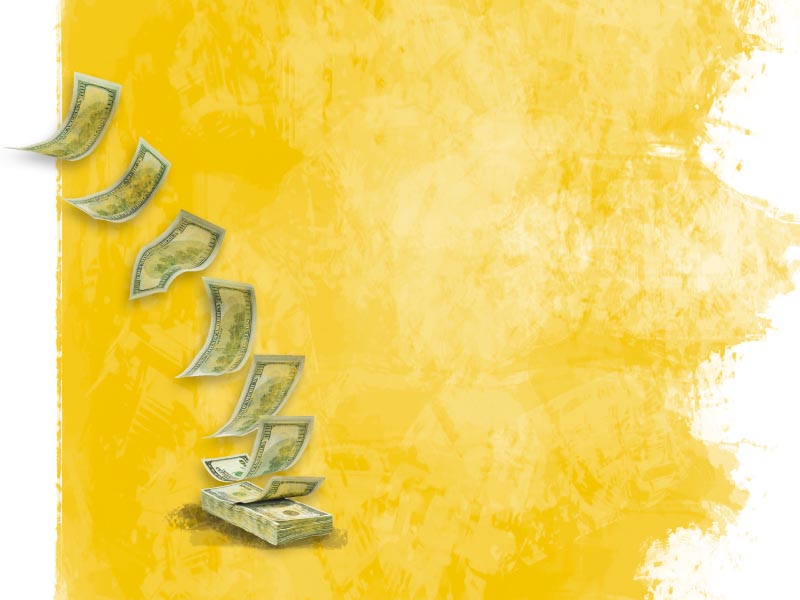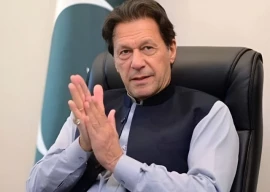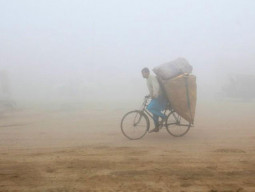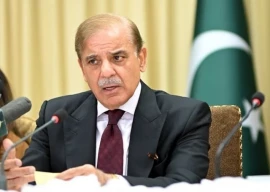
Pakistan badly needs fresh foreign money for boosting foreign exchange reserves and to ease down pressure on Pak rupee. To avoid a full-blown crisis and a collapse of the currency, the assistance of a $6.6 billion loan from the IMF may be a ray of hope but at the cost of crowding out of the private sector, because in order to fulfill the conditions set by the IMF, the government hiked the interest rates.
The flexible exchange rate that prevails in Pakistan increases uncertainty for traders both internally and externally and also has a hash effect on a volume of foreign debt which might eventually lead to the depression and unwanted inflation.
In Pakistan external loans are contracted in various currencies but disbursements are effectively converted into Pak Rupee. As Pak Rupee is not an internationally traded currency, the other currencies are bought and sold via selling and buying of US Dollar. Hence, currency exposure of foreign debt originates from two sources: US Dollar/other foreign currencies and Pak Rupee/US Dollar. This two-pronged exchange rate has been a major source of increase in the stock of EDL over a period of time.
Pakistan’s external debt and liabilities (EDL) include all foreign currency debt contracted by the public and private sector, as well as foreign exchange liabilities of the State Bank.
According to the data compiled by State Bank of Pakistan: External Debt in Pakistan decreased to 59.561 USD billion in the second quarter of 2013 from 60.9 USD billion in the first quarter of 2013. From 2002 until 2013, Pakistan External Debt averaged 47.037 USD billion reaching an all-time high of 66.451 USD Million in December of 2011 and a record low of 33.172 USD billion in September of 2004.
Exchange rate is a determinant factor of international transactions. A comprehensive research on the subject matter showed that highly indebted nations like Pakistan find it difficult to progress despite their incessant efforts as a result of fluctuations on the exchange rates. The depreciation of nation’s exchange rate is a result of its deficits; however this will increase the debt service payment in domestic currency.
In current scenario, total foreign debt of the country stood at dollar 59.5 billion and depreciation of one rupee per dollar would increase the debt by Rs59.5 billion. Since the Pak rupee had depreciated between six rupees and seven rupees over the last few weeks, national debt would have increased by around Rs357 billion and spiked inflation.
As far as composition of External Debt and Liabilities is concerned, EDL has been dominated by public and Publicly Guaranteed Debt having share of 73 percent owing to current account deficit which is financed through loans from multilateral and bilateral donors. Debt obligations of private sector are fairly limited and have been a minor proportion of EDL (5 percent). Borrowing from IMF contributed 9 percent in EDL stock as compared with 11 percent at the end of 2011-12 owing to hefty repayments during the first nine months of current fiscal year.
The servicing on EDL was recorded at US$ 5.3 billion during first nine months of current fiscal year. Out of total debt servicing, an amount of US$ 3.9 billion was repaid, out of which around US$ 2 billion was against IMF loans. Loan repayments to the IMF has strained the rupee and drained forex reserves.
According to the IMF, Pakistan’s current level of foreign reserves is critically low at 5.4 billion US dollars, whereas the IMF’s adequacy metric suggests a level of 14 billion US dollars for countries with a floating exchange rate and 23 billion US dollars for countries with a fixed exchange rate. The low level of reserves leaves the economy susceptible to a number of triggers that could result in a BoP crisis, similar to in 2008.
Given the heavy amount of external debt payable, the current continuous currency depreciation will put heavy burden on the country’s economy. Therefore, Pakistan should adopt policy of stabilising the exchange rate, in order to protect the country against the increase in debt.
If Pakistan could manage to earn current account surplus over a number of years, the supply of foreign exchange would automatically increase in the free and interbank markets.
The writer is a researcher at the Economic Growth Unit of Sustainable Development Policy Institute
Published in The Express Tribune, October 21st, 2013.
Like Business on Facebook, follow @TribuneBiz on Twitter to stay informed and join in the conversation.
COMMENTS (15)
Comments are moderated and generally will be posted if they are on-topic and not abusive.
For more information, please see our Comments FAQ









1732549780-0/Speaker-Na-photo-22_04_2014-(1)1732549780-0-270x192.webp)







SO how exactly would you make the currency appreciate? By selling foreign currency and buying rupee. Does Pakistan have the luxury of abundant forex to be able to do so? No, SBP has less than one month's import worth of forex. In fact even to keep the rupee steady at 106.5 to a dollar it has to sell forex and deplete its reserve due to the CAD. On international comparison basis, the CAD is not so high as a % of GDP but the problem is that Pakistan is unable to get even this low level of CAD financed.
Thus IMF or not, there is no way around the fact that Pakistani currency will depreciate(Indian di too recently- so this is not any form of gloating) until the CAD becomes manageable.
It Is (still) Economy Stupid How about the population? seems like whole nation is on payroll to give birth to more children. Disagree with your crap . Half of the Indian population have no access to toilet (http://www.bbc.co.uk/news/world-asia-india-17362837) . what does that mean ? Half of the population should be killed ? A day before Eid-ul-Adha , 35 million dollars came into market . Stupid illiterate morons were saving dollars don't know for what ?
Pakistan real problem is its stupid people . Burning resources ( CNG) in cars and not giving it to industry . Limited investment or zero in Software and Hardware and Metalergy education and industry . Bigger issue is shameless nation.
Can you specify, Sir, what have been our "incessant efforts" to stabilize the exchange rate?
The exchange rate is always and everywhere a symptom of a bigger problem: bad economic policies. That even applies to the almighty dollar, down 40% in the past ten years.
An excellent case of the phrase 'as you sow, so shall you reap'.
ETBLOGS1987
To avoid a full-blown crisis and a collapse of the currency, the assistance of a $6.6 billion loan from the IMF may be a ray of hope but at the cost of crowding out of the private sector, because in order to fulfill the conditions set by the IMF, the government hiked the interest rates".
Do you think that the capital would not be even more scarce if IMF did not approve its 6.6 billion dollar loan? If it were more scarce, would interest rates increase or decrease to reflect the scarcity? In other words, due to the current situation where foreign capital is not flowing in due to terrorism and load shedding related issues, how can interests rates be kept low in a capital starved country?
Also the current depreciation of Pakistani currency reflects forex scarcity. The government is trying to control depreciation by selling forex at a time when it has shortage of forex. This is a very high risk strategy which will result in wide ranging shortages of imported goods. Some shortages may not harm but others e.g. shortage of oil (whose absence would increase load shedding), fertilisers (whose absence would reduce food grain roduction) and such other key imports will severely hurt Pakistani economy.
There is a price to be paid for keeping the currency ariticially high.
so, the economy is at the verge of distruction.
Current account deficit every year is bound to cause depreciation of rupee means demand for dollar is more than its supply i.e. mainly export earning, inward remittance by the diaspora, investment by foreign corporates in the country and earning through foreign tourists . Despite having high potential for foreign investment, and tourism the present scenario of bad law and order condition and terrorist activities of at least one bomb explosion everyday, ethnic/ sectarian killings are the factors which prohibit the foreign tourists and Investors to enter and establish business enterprises. Energy crisis , lack of technology up gradation( to remain competitive) has left little room to improve / increase the exports. Value addition in the export is required to get higher amount with the same volume of exports. Pakistani products also lack any brand value in the global market ( for higher return) Therefore to reduce the demand of dollar Government has to initiate measures to reduce/ban imports on gold, luxury cars and unwanted items to ease the pressure on reserves. Ultimately FDI will create jobs/ improve exports and arrest the slide of the rupee, even help the rupee to appreciate. No other way is visible.
well written article! but the writer has not suggested any specific remedy through which the said problem could be addressed.
A very well written article. The persistent depreciation has effected the macro economic variables badly. The stagflation as a result of these issues has curbed the overall economic growth.
@abdussamad For your kind information: I have mentioned in my article due to currency depreciation our external debt will increase in Pakistani Rupee terms. In your comment you are saying about an international law regarding enhancing exports and reducing imports, this case does not exists in Pakistan.
@abdussamad you are right that in international scenario depreciation of rupee an makes imports expensive and exports cheaper, but case of Pakistan is exceptional. since 2007 currency depreciation has not resulted any increase in exports and decrease in imports while the continuous depreciation has caused an increase in external debt in Pakistani Rupee terms. read article critically.
This article is completely upside down. The depreciation of the rupee is what is saving Pakistan from defaulting on its external debt.
If the rupee remained the same it would make imports cheaper and exports expensive. This would have accelerated the outflow of foreign currency.
The depreciation of the rupee will help our exporters and discourage imports. We need to allow the rupee to move freely or we will create problems for ourselves. We are currently in this position precisely because the SBP wasted billions of dollars defending the rupee.
@It Is (still) Economy Stupid: No, hold hope in revolution! Do your part, we can fix this. Also, don't be baffled by the economic descriptions in the article, it only clouds the real reason of inflation/currency depreciation: interest-based debt.
Pakistan should change its name in policy. The new name should eliminate letters k (Kashmir), A (Al Qaeda) and T (Terrorism/Taliban) and call itself pisan. Until unless Pakistan accept that in last 65 years these three bad policies ruined the country get ready for Zimbabwe of south east Asia.